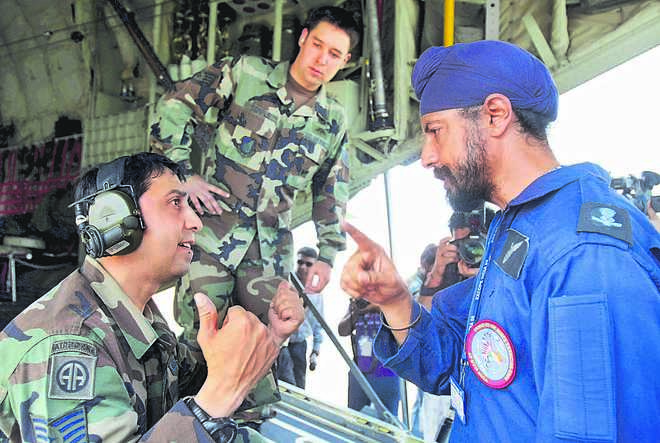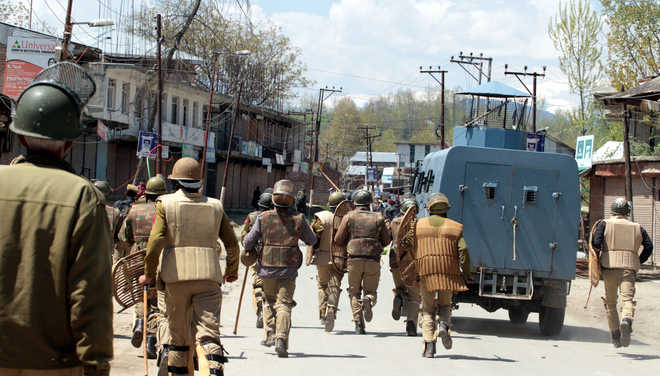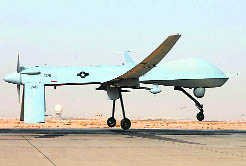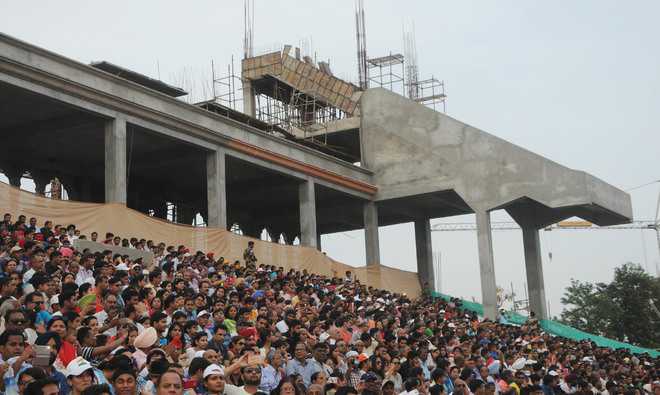
It is simple: New Delhi needs American power to compete with China.
INDIA’S agreement with the US to allow access to its defence facilities to American military on a reciprocal basis, in philosophical terms, a great leap but makes sense in today’s geopolitical environment. India has strayed from its proclaimed non-aligned policy in the past in seeking US military assistance during the India-China conflict and in signing an Indo-Soviet pact before the Bangladesh war, but the logistic agreement has a different resonance because much of the rhetoric in the developing world was directed against the US. The Modi government’s decision to go ahead with the agreement against the expected opposition of the Congress and the Left parties flows out of a stark fact. An assertive China is seeking to expand its influence on land and sea in the region and beyond it. In sea power, Beijing’s action in building islands on shoals in the South China Sea and militarising them to claim most of the two seas — the other being East China Sea — against claims by regional powers has led to a new ball game, with the former enemy Vietnam seeking close relations with Washington and the Philippines, which closed American bases in the early 1990s to invite them back in.India is not quite in the league of these smaller South-east Asian nations but has the bigger task of prevailing in the Indian Ocean and needs greater heft to do so in the face of an expanding Chinese naval power. In other words, New Delhi needs American power to compete with China. The direction of Indian policy was clear for some time even during the UPA regime as joint exercises with countries such as Japan, Australia and the US grew in size and frequency. The Modi government has now taken this trend to its logical conclusion.Yet the emotional wrenching it causes among old-time liberals and nationalists is understandable. Long after New Delhi discarded the increasingly flexible concept of non-alignment in framing its policies, the emotional pull of the glory days of the movement in the era of Nehru with India being relatively weak in military terms made Indians 10 feet tall. In time, NAM the movement became like the Janata train with everyone clambering into it, whatever their ideological predilections.Today we live in a dangerous and changing world, with the old Soviet Union gone, replaced by a diminished Russian Federation, and China being increasingly treated by the only remaining superpower as nearly its peer. The Middle East continues to be a region of great instability and the European Union is increasingly facing its middle age blues without the will to act purposefully on such issues as the influx of refugees from wars in the Middle East and elsewhere.The US’ famous “pivot” to Asia has been slower in the making, thanks to its preoccupations in the Middle East and other parts of the world, but a gradual US shift will be completed. In the meantime, Washington is implementing policies underlined by Defence Secretary Ashton Carter’s swing through India and the Philippines to shore up friends in the event of China seeking to challenge a traditional area of American influence.There are not many alternatives New Delhi has in safeguarding its interests against China while seeking a saner relationship with a hostile Pakistan. NAM has long been a broken reed and while the nature of future agreements with the US can be debated, a closer defence relationship is inevitable. It is no secret that New Delhi’s deeper relationship with Vietnam is determined by the China factor on both sides.Equally, Mr Modi’s efforts to build an equation with President Obama and Japan’s Prime Minister Shinzo Abe are guided by India’s need to buttress relations with two key countries. Besides, Australia’s strategic location and military capabilities have become a new factor in New Delhi’s strategic calculations. And these countries support Mr Modi because he is seen as a clearheaded leader who does not suffer from the liabilities of his predecessor who was saddled with a dual key leadership arrangement and had to cope with grasping coalition partners.To an extent, geostrategic equations in the world are evolving and the nature of future logistic and other defence relations with the US will depend upon the scale of China’s assertiveness, the compulsions of the next US President and the strength of other major countries such as India and Japan in coping with President Xi Jinping’s ambitions. It will be crucial for Mr Modi to build a new national consensus despite his BJP’s and Sangh Parivar’s pursuit of a divisive domestic agenda promoting the denigration of Muslims in particular and endorsing a Hindutva campaign that sits ill with a diverse country of many faiths and beliefs. The problem is the ideological belief of the Sangh Parivar that its path to glory is the only one India should adopt.For the critics of the Modi government, it would be well to recognise that the old world facing the Independence generation has gone and they must face the future with new realities. It was particularly distressing that Mr AK Antony, who held the defence portfolio in the UPA for long without distinction, should have made the statement he did.According to Mr Antony, the logistical agreement with the US “would open the door for India becoming part of American military bloc…There was pressure to sign such a pact when UPA was in power. But we resisted it because we felt it was against national interest”. More predictably, the Communist Party of India (Marxist) Politburo declared, “Unlike what Defence Minister says, refuelling, maintenance and repair facilities for American ships and airplanes will require stationing of US armed forces personnel on Indian soil on a regular basis”.The Communists miss the whole point of the changed world we live in. Americans are no longer untouchables and we need them to protect the country’s security.




































































